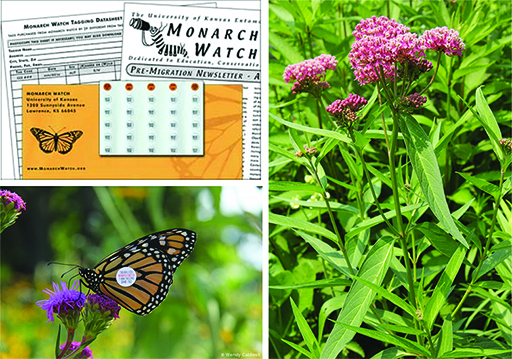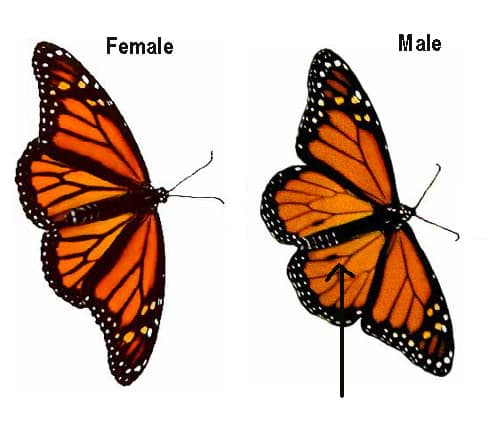1.1 Case study on monitoring monarch butterflies
Each stage of the life cycle of the monarch butterfly needs to be studied if the threats to its populations are to be understood, yet studying an animal with such a massive geographical range is challenging. In Mexico, the overwintering colonies are in a reserve and monitored by government scientists. In the USA and Canada, information about the butterfly is sourced from a network of citizen science volunteers. They can record sightings by posting details to a website such as Journey North [Tip: hold Ctrl and click a link to open it in a new tab. (Hide tip)] (or take part in a tagging programme such as the one on Monarch Watch, where volunteers can purchase tagging kits with pre-numbered tags along with instructions on how to use them (Figures 1–3). The purpose of the tagging is to determine the pathways taken by migrating butterflies. Obviously, over such a large area it would be unlikely that a marked individual would be sighted and recorded, unless there were thousands of active observers. This type of project can be carried out only on a citizen science basis.
Each tag is printed on a polypropylene sheet that has a special adhesive on the back. It is attached to the hind wing of the butterfly, close to its centre of gravity, so as not to impede flight. Downloadable spreadsheets are available to assist with record-keeping and for submitting completed data.
Activity 1 A monarch survey
Imagine that you live in North America and have equipped yourself with tagging equipment to monitor adult monarchs from the Monarch Watch Shop. Make a list of what you need to know before you set out, what information you will need to record and what additional observations might be useful.
Answer
Thinking back to what you read in earlier weeks, before setting out you would need to know the type of environment that monarchs might be found in and, crucially, how to identify the monarch adult butterfly, distinguishing between males and females (Figure 4). You would also need to know how to capture, tag and release the monarchs. The basic data that are essential are when (date and time), where (map reference or GPS coordinates) and how many individuals of each sex at any one time. Additional observations that are:
- what the individual(s) were doing (e.g.feeding, flying, basking, egg-laying)
- whether food plants were available for the larvae and their density
- weather conditions
- any other butterfly species observed.
You might also take photographs, and you probably have other possible observations on your list.
Citizen scientists also take part in other monarch-related projects as well as the tagging one. For example, studying egg-laying sites and the larval stages of their development provides information about their habitat requirements. Surveys are done weekly from the first time they see milkweed in their study area. They record the data they gather online. It is important to survey the occurrence of the food plant for the larvae, milkweed (Asclepias sp.). You will learn about plant survey methods in the next section.


